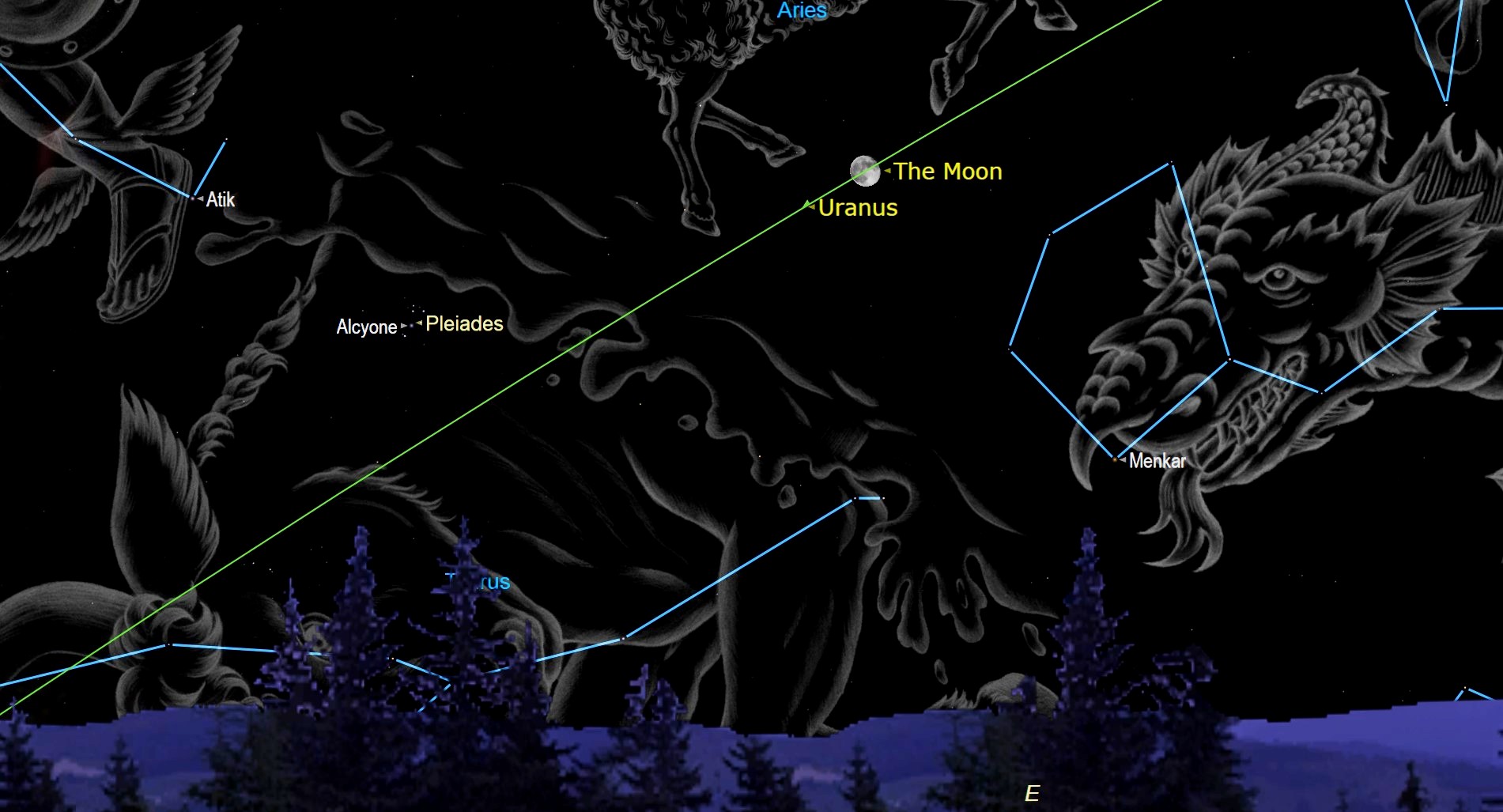Watch the moon pass in front of Uranus early Wednesday (Oct. 12)
The lunar occultation of Uranus will be visible from Canada, the western U.S., and northwestern Mexico.

Early on Wednesday (Oct. 12), Uranus will briefly disappear from the night sky as the moon passes in front of the distant ice giant planet. The event, known as a lunar occultation, will be visible from parts of the North American continent.
The lunar occultation will start at 2:11 a.m. EDT (0611 GMT) on Wednesday morning when Uranus — the seventh planet from the sun — begins to vanish behind the moon. According to In The Sky.org, Uranus will be in the constellation of Aries at the time of occultation and will appear roughly 16 degrees above the horizon. (Your fist at arm's length corresponds to roughly 10 degrees.)
The planet will have a visual magnitude of 5.7 as it vanishes behind the moon, meaning it will not be incredibly bright to the naked eye; the lower an object's magnitude, the brighter it appears.
Related: Night sky, October 2022: What you can see tonight [maps]
Like all lunar occultations, the lunar occultation of Uranus will only be visible from certain parts of the planet such as Canada, the western U.S. including Alaska, and northwest Mexico. The occultation on Oct. 12 won't be visible in New York City or in the U.K.
This limited visibility happens because the moon is close enough to Earth that its position in the sky in relation to more distant celestial objects varies depending on where on the planet an observer is located.

Want a telescope to help you see events like lunar occultations better? We recommend the Celestron Astro Fi 102 as the top pick in our best beginner's telescope guide.
That means while the lunar occultation of Uranus is visible to some, skywatchers on the other side of Earth will see the planet and the moon separated by two degrees, over four times the moon's diameter in the sky.
Get the Space.com Newsletter
Breaking space news, the latest updates on rocket launches, skywatching events and more!
In other areas, the occultation won't be visible because Uranus is below the horizon at the time of the lunar occultation or won't be observable because the sky is too bright for it to be seen.
Where the lunar occultation of Uranus can be seen, the bright glare of the moon will obscure it. This means skywatchers will need a pair of binoculars to see the event and the planet. Even where the lunar occultation isn't visible, the moon's proximity to Uranus will give observers in these regions a good guide to spotting the dim planet.
Read more: Best binoculars 2022
Uranus is the third largest planet in the solar system and is four times wider than the Earth. The planet is described as an ice giant with at least 80% or more of its mass made up of an icy mix of water, methane, and ammonia.
Despite being so large, Uranus isn't as visible as Jupiter and Saturn — the solar system's massive gas giants — because it is further out in the solar system located at a distance of around 1.8 billion miles (2.9 billion kilometers).
This is so far away that the planet takes around 84 Earth years to complete an orbit of the sun.
The moon is currently enjoying a long streak of occulting Uranus. It has obscured the ice giant from somewhere on Earth once a month since February 2022. This will continue for the rest of this year.
The next lunar occultations of Uranus happen on Nov. 8, and Dec. 5. Once again, these will only be observable from certain areas on the planet.
Follow us on Twitter @Spacedotcom or on Facebook.
Join our Space Forums to keep talking space on the latest missions, night sky and more! And if you have a news tip, correction or comment, let us know at: community@space.com.

Robert Lea is a science journalist in the U.K. whose articles have been published in Physics World, New Scientist, Astronomy Magazine, All About Space, Newsweek and ZME Science. He also writes about science communication for Elsevier and the European Journal of Physics. Rob holds a bachelor of science degree in physics and astronomy from the U.K.’s Open University. Follow him on Twitter @sciencef1rst.









